- News
- Reviews
- Bikes
- Accessories
- Accessories - misc
- Computer mounts
- Bags
- Bar ends
- Bike bags & cases
- Bottle cages
- Bottles
- Cameras
- Car racks
- Child seats
- Computers
- Glasses
- GPS units
- Helmets
- Lights - front
- Lights - rear
- Lights - sets
- Locks
- Mirrors
- Mudguards
- Racks
- Pumps & CO2 inflators
- Puncture kits
- Reflectives
- Smart watches
- Stands and racks
- Trailers
- Clothing
- Components
- Bar tape & grips
- Bottom brackets
- Brake & gear cables
- Brake & STI levers
- Brake pads & spares
- Brakes
- Cassettes & freewheels
- Chains
- Chainsets & chainrings
- Derailleurs - front
- Derailleurs - rear
- Forks
- Gear levers & shifters
- Groupsets
- Handlebars & extensions
- Headsets
- Hubs
- Inner tubes
- Pedals
- Quick releases & skewers
- Saddles
- Seatposts
- Stems
- Wheels
- Tyres
- Health, fitness and nutrition
- Tools and workshop
- Miscellaneous
- Cross country mountain bikes
- Tubeless valves
- Buyers Guides
- Features
- Forum
- Recommends
- Podcast
£130.00
VERDICT:
Reliable and interesting but expensive insight into endurance fuelling
Reliable data transfer
Easy-to-use software
Huge nutrition educational resource
Pain-free
Reliable
It's no quick fix…
It takes a lot of time and dedication
Diminishing gains after the initial period
Energy Band battery life could be better
Weight:
45g
Contact:
At road.cc every product is thoroughly tested for as long as it takes to get a proper insight into how well it works. Our reviewers are experienced cyclists that we trust to be objective. While we strive to ensure that opinions expressed are backed up by facts, reviews are by their nature an informed opinion, not a definitive verdict. We don't intentionally try to break anything (except locks) but we do try to look for weak points in any design. The overall score is not just an average of the other scores: it reflects both a product's function and value – with value determined by how a product compares with items of similar spec, quality, and price.
What the road.cc scores meanGood scores are more common than bad, because fortunately good products are more common than bad.
- Exceptional
- Excellent
- Very Good
- Good
- Quite good
- Average
- Not so good
- Poor
- Bad
- Appalling
The Supersapiens Glucose Monitoring System claims to be the world's only minute-by-minute energy management system. Does it work? Simply put, yes. I've learnt an awful lot about my personal nutrition strategy and have enjoyed a glitch-free and reliable review period. The price means it's not for everyone, though, and even the most serious of athletes might choose to use the subscription-based model sparingly.
> Sign up for a subscription here*
"Never bonk again." It's a tantalising prospect, isn't it? And one that Supersapiens claims can be a reality with its real-time glucose monitoring system. Glucose sensors are by no means a new invention – diabetics have been using them for years – but the concept of using them to gain an advantage in sports is relatively new. We can expect to see – in fact are already seeing – glucose sensors being used in a wide variety of disciplines, and despite them being banned by the UCI we can expect them to continue to make the headlines in cycling.
What is Supersapiens?
There are a few different parts to Supersapiens, the most obvious to the untrained eye being the Version Zero Energy band. In reality, for cyclists, this is the least important piece of the puzzle and should really just be considered as an add-on to the system.
The band itself costs just under £140 and provides a window into your body's real-time glucose level. It's very similar in size and quality to a Fitbit or Garmin Vivosmart 5. I was also glad to see that Supersapiens has given the band the ability to tell the time, unlike some wrist-based tech – Whoop, I'm looking at you! Battery life is average at best; I could get a few days out of it before it needed charging using the included proprietary cable.
In use, the band does its job, relaying live glucose levels. However, because of Bluetooth limitations it wasn't possible to pair the sensor to my phone, cycle computer and energy band all at the same time, and so for cycling, the band was often the first device to go. Personally, I wouldn't recommend the band to pure cyclists; you can get all the same data and more from your phone and cycle computer, so unless you're also running and swimming then it is unlikely to be necessary.
The next part is this Abbott Libre Sense Biosensor. These are purchased on a subscription basis at £130 per month. Not cheap then, but we'll get more into the value side in a minute.
Despite its small size, this little thing will relay glucose levels via Bluetooth every minute of every day for up to two weeks at a time. It's also waterproof, which will be of added importance if you're a triathlete.
The 35mm diameter Biosensor houses a circuit board, battery, NFC (Near-Field Communication) chip, Bluetooth sensor, and enough onboard memory for a claimed eight hours of data. What that means is that you can be out of range from your phone/cycle computer for that length of time and not lose any data. Any missing data from the previous eight hours or so can then be transferred via NFC by touching your phone against the sensor.
In use, I could indeed get the full two weeks out of the sensor (it stops transmitting automatically after that), despite knocking it on quite a few door frames. It's surprising how close I must usually walk to objects! If further protection is required then Supersapiens offers a 'performance patch' which covers up the sides of the sensor for additional peace of mind.
Why aren’t the pros using them?
Arguably the biggest hurdle in cycling for Supersapiens is that this kind of technology was swiftly banned by the UCI, which claimed that it would make racing too robotic. I got the chance to speak to David Lipman of Supersapiens, who did raise the question of how come power meters are allowed then, and I do have to agree with him on that one.
Just last week the UCI disqualified Kristen Faulkner from the Women's Strade Bianche after photos emerged of a Supersapiens sensor on her arm. Faulkner claims that the device was not transmitting data during the race, either way, it appears that the UCI is standing firm and we won't see continuous glucose monitors appearing in the World Tour any time soon.
It goes without saying that the vast majority of us don't race at this kind of level, so this won't be an issue for most.
What are the benefits?
I've spent years trying to improve my own performance on the bike, and in a sport that is dominated by marginal gains, nutrition is not one of them. It's not even remotely marginal! The difference that fuelling properly can make to your speed, ride enjoyment and training benefit is literally make or break, and so it is surprising that up until now there have been very few technological developments focusing on this metric.
Supersapiens claims that its system takes the mystery out of fuelling and that athletes who are informed about their glucose levels and responses to different stimuli – ie food – can improve not only their race day performance but also their recovery, preparation AND everyday training. That's probably why we've seen them stuck to the arms of Jumbo—Visma during the off-season.
Application
With each biosensor, you also get an applicator, basically a stamp that you use on your upper arm. The process is extremely simple and takes a matter of minutes.
Contrary to what I thought, the needle doesn't stay in your arm and rather just guides in the flexible filament, which needs to be just under the skin. For anyone who knows their biology, the filament detects the glucose levels in your interstitial fluid – that's a thin layer of fluid surrounding the cells just beneath your skin.
Supersapiens says that the application is painless for over 90% of people, and I'm happy to report that I fit into that category. In fact, you don't really feel it at all. The trouble is that by the time two weeks are up and you need to replace the sensor, you've forgotten that, and stare at the needle all over again…
My advice would be to not look at the needle and just get on with it! Even if you're okay with needles it can be a daunting prospect to whack one into yourself. You could, of course, get someone else to do it for you, but once it's in you'll wonder what all the fuss was about.
Once in, the sensor can be paired with ease to your phone via the easy-to-navigate Supersapiens app, and then after a one-hour warm-up period, you're good to go.
In use
As previously mentioned, as well as transmitting data to your smartphone, the biosensor can also transmit data to a cycle computer. Garmins have been compatible for some time, but I've taken advantage of the recent inclusion of Wahoo compatibility and used the system with a Roam V2.
The integration with Wahoo works well, but could do with a little refinement. For example, pairing the sensor involves a bit of going forwards and backwards between the Wahoo Elemnt and Supersapiens apps, and then once paired it automatically adds itself as the first data field (which is not where I wanted it). Subsequently, it would revert back to this default even after being changed – a small but irritating detail when heading out on rides.
As I mentioned earlier, any data that isn't transferred straight to the phone can be gathered later using the NFC chip, but as I usually have my phone on me, I managed to collect data reliably for every single hour of the six-week review period.
The phone application is split into four sections:
Measure – where you can see your live glucose levels as both a figure given in mg/dL and in graph form.
Events – these are what Supersapiens calls any out-of-the-ordinary glucose behaviour, including spikes, dips and physical activity, for example bike rides. I have events for every ride I did with the sensor on, with workout data imported from Trainingpeaks. For each ride, Supersapiens gives me a glucose score out of 100 – the higher, the better fuelled I was for said ride. This is based on how much time was spent within performance zones, which can be customised. Other events include 'rushes' – these are glucose spikes.
Learn – this section does what it says on the tin. For the first four weeks there are daily onboarding sessions to help guide you through the process. Each one takes roughly three to five minutes to read and digest and is useful, clear and concise. The 'Education Hub' is also accessed on this tab – this is a whole bank of videos, guides and relevant articles. It's safe to assume that if you have bought a Supersapiens subscription then you are very interested in nerding out over nutrition, and these are perfect for people who are this way inclined.
Profile – the final section is where you pair sensors and devices such as your cycle computer.
Each night I would study my day's glucose levels to see how they fluctuated, what food groups resulted in severe peaks and troughs, and how I could better manage my nutrition. The onboarding sessions in the 'learn' section of the app gave useful insights into potential causes for spikes and suggested remedies – for example, walking after eating, shots of vinegar with food, and different forms of carbohydrates to try.
After three or so weeks of using Supersapiens, I was much better at keeping my glucose levels steady. I'm far from qualified to speak on how that is beneficial, but most physicians are in agreement that glucose spikes are bad.
The app automatically logs spikes, and you can then log both the cause and add notes, such as what food you ate, to monitor trends and patterns.
David Lipman, Supersapiens' director of applied science and content, was keen to get across that Superspaiens is not just for during activities, it can help play a role in the preparation for rides.
The foods that you eat in the four hours or so before riding can have a huge impact on your performance. Supersapiens helps identify what works for you, and it only took a few days for me to time my porridge intake perfectly so I was heading out fully fuelled. I would argue that this is one area in that a bit of research combined with trial and error would also be a viable method. But this isn't the only area that Supersapiens can be used...
During rides
I found both positives and negatives when riding with the biosensor live streaming to my cycle computer. We'll start with the negatives.
Towards the end of the onboarding period, you will look at personally tailoring your performance zone. As default, this is set between 110-180 mg/dL, and I think the process for setting this could do with some work. It basically involves trial and error and rate of perceived exertion; you then check to see what your glucose levels were when you felt good, and avoid the glucose levels when you felt worse for wear.
Supersapiens' strapline is 'never bonk again' – rest assured it is still very possible to bonk while using this device. Even after setting up my performance zones accurately, I found that by the time the number started dropping it was almost always too late to start eating. Therefore, you still need to be proactive with your nutrition and start eating before you think you need it, or indeed, before the arrow next to your glucose level begins pointing downwards.
> How to eat right for sportives and long rides
On the plus side – the area that was the highlight for me was monitoring the response to different on-bike nutrition. As a cycling journalist, I'm lucky enough to get to try a huge variety of foods to find out what works best for me, which could cost a small fortune for the average consumer. But even with access to all these products, I was still munching down plenty of cheap store-bought cereal bars – something that, after seeing the short, sharp spikes they caused, I won't be continuing.
> Check out the latest road.cc reviews of energy & recovery bars
Supersapiens also confirmed that my positive experience of SiS BetaFuel was indeed scientific and not just a placebo. During training, this kind of information is invaluable to endurance athletes – it allows riders to find foods and carb sources that work best for them and so improve their performance.
Conclusions
While the Supersapiens system is very good, you shouldn't expect this to be some quick fix to all your nutritional needs. It takes time, dedication and plenty of research to get the maximum benefit out of glucose monitoring, so if this doesn't sound like you then this isn't going to be the product for you.
What I'm trying to say is that there's absolutely no point knowing what your glucose levels are if you're not going to act on them. Pro riders have a whole team of nutritionists to analyse the data that the device can provide, along with strategies to try different fuelling regimes for both on and off the bike. For many competitive athletes, this data is absolutely invaluable and takes the guesswork out of what works for them and what products they should be fuelling with.
On the other hand, there's a lot of research that you could do yourself in this regard. The Supersapiens guides have taught me a huge amount about nutrition and fuelling, and while it is all in one handy place, much of this information is available for free elsewhere on the internet. If you were really committed then a cheaper alternative would be to start a diary for every ride, noting your rate of perceived exertion and what you ate both before and during the activity. That said, Supersapiens does remove a lot of the guesswork from this process.
If you're only interested in it for cycling, I'd recommend forgoing the Energy Band (just under £140) and trialling a short sensor membership programme (€150/£130 every 28 days). It's not personally a product that I could justify using year-round, but I can see the benefit of using it for 10 weeks or so and then in the lead-up to target events.
Overall, I'm torn on how useful the Superspaiens device would be over a sustained period. I think that as long as you're prepared to try different things and put in the time and effort to learn about nutrition then the glucose monitor will be of benefit in the short term. That's why I'd recommend trying one of the shorter subscription plans of £130 for 28 days – you can expect a steep learning curve and good value for your money. With the longer plans, I think you will likely experience diminishing gains, as you will soon collect the low-hanging fruit, as it were.
*Note: there's currently a 40-day wait for new subscriptions.
Verdict
Reliable and interesting but expensive insight into endurance fuelling
road.cc test report
Make and model: Supersapiens Glucose Monitoring System Subscription (Monthly)
Size tested: n/a
Tell us what the product is for and who it's aimed at. What do the manufacturers say about it? How does that compare to your own feelings about it?
Supersapiens claims that you can "Never bonk again with the world's only minute-by-minute energy management system". It works well, with reliable data, but it is quite expensive and requires a lot of time and learning to get the most out of.
Tell us some more about the technical aspects of the product?
Available in 4, 10, 14, 18-week subscriptions
Rush detection notifications
real-time glucose monitoring
Each sensor lasts 14 days
waterproof
Rate the product for quality of construction:
8/10
No issues.
Rate the product for performance:
8/10
The application, sensor and software worked without fault for the review period. There are a few refinements that could be made to the integration with a Wahoo head unit. Data transfer was reliable and the device provided useful insights. In some cases, the performance is very dependent on how much time and learning you put in and much of this information is available online elsewhere.
Rate the product for durability:
9/10
Sensor lasted the claimed two weeks with no issues; additional sports patch available for contact sports and additional peace of mind.
Rate the product for weight (if applicable)
9/10
Sensor is easy to forget once applied.
Rate the product for comfort (if applicable)
8/10
The application was pain-free, although slightly nerve-wracking the first time. The sensor stayed on fine and caused no discomfort during use.
Rate the product for value:
5/10
Tell us how the product performed overall when used for its designed purpose
It performed very well. I had reliable data transfer, an easy and pain-free application, and clear and easy-to-use app experience.
Tell us what you particularly liked about the product
The most useful insight for me was how I responded to different in-ride fuelling strategies, something that would take significantly more time and investment without this device.
Tell us what you particularly disliked about the product
I enjoyed a lot of the learning, but you do need to dedicate a significant amount of time each day to get the most out of the glucose monitoring.
How does the price compare to that of similar products in the market, including ones recently tested on road.cc?
The Supersapiens system is unique; we haven't reviewed a product like this before.
Did you enjoy using the product? Yes
Would you consider buying the product? Yes – for the 10-week subscription.
Would you recommend the product to a friend? Some of them.
Use this box to explain your overall score
Fuelling is a massive part of endurance sport and something that is still reliant on a huge amount of guesswork and trial and error. The Supersapiens glucose monitoring system goes a long way to removing the unknowns, but only if you're prepared to spend plenty of time and effort using the provided learning. For analysing fuelling strategies both before, during and after activities the Superspaiens system has been reliable, easy to use and insightful. In the short term, the benefits to cost will be worth it for many athletes.
About the tester
Age: 23
I usually ride: Specialized venge pro 2019 My best bike is:
I've been riding for: Under 5 years I ride: Every day I would class myself as: Expert
I regularly do the following types of riding: road racing, time trialling, cyclo cross, commuting, club rides, sportives, general fitness riding, mtb,
Jamie has been riding bikes since a tender age but really caught the bug for racing and reviewing whilst studying towards a master's in Mechanical engineering at Swansea University. Having graduated, he decided he really quite liked working with bikes and is now a full-time addition to the road.cc team. When not writing about tech news or working on the Youtube channel, you can still find him racing local crits trying to cling on to his cat 2 licence...and missing every break going...
Latest Comments
- Samtheeagle 2 min 7 sec ago
Crown Estate return all revenue to the Govt (HM Treasury to be specific). Crown Estate Lands were exchanged for an agreed salary (Civil List...
- Rendel Harris 1 hour 21 min ago
I agree, very little improvement indeed. From the first paragraph:...
- Rendel Harris 1 hour 26 min ago
Well yes they could but much as we would love it that would set an unworkable precedent whereby huge numbers of sports would have to go on the...
- David9694 2 hours 32 min ago
I had to look this one up: https://savingplaces.org/stories/a-tale-of-two-planners-jane-jacobs-and-...
- chrisonabike 2 hours 45 min ago
What wokery is this? I thought those tech-bros were there to save us from the "mind virus"?
- hawkinspeter 15 hours 32 min ago
Opposition to controversial East Bristol Liveable Neighbourhood ‘will filter away’ say council bosses...
- quiff 17 hours 24 min ago
I know it's not the same, but they are saying Quest will have free highlights.
- chrisonabike 18 hours 46 min ago
Yeah but if you take away any chance of getting their licence back they'll turn into some kind of amoral road-bandit! * checks court records again ...
- mdavidford 19 hours 27 min ago
As far as I can see, the only place anything like that number appears in the source story is in the video, near the end, when they're chatting...
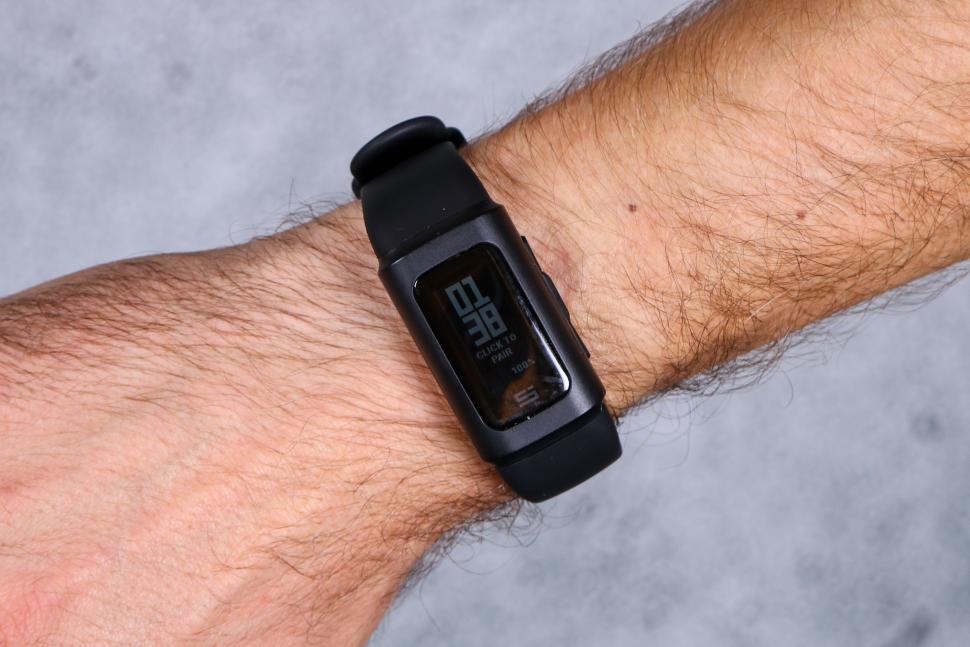


















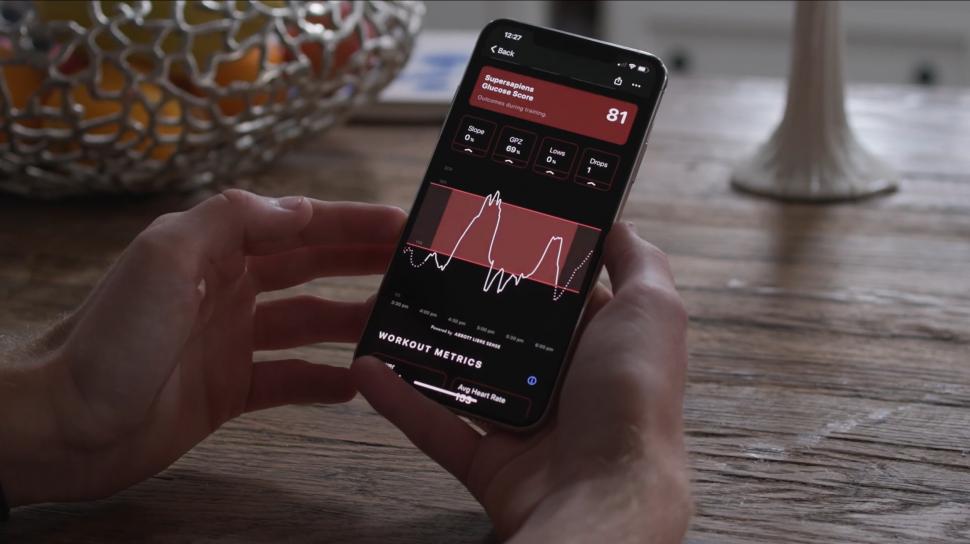

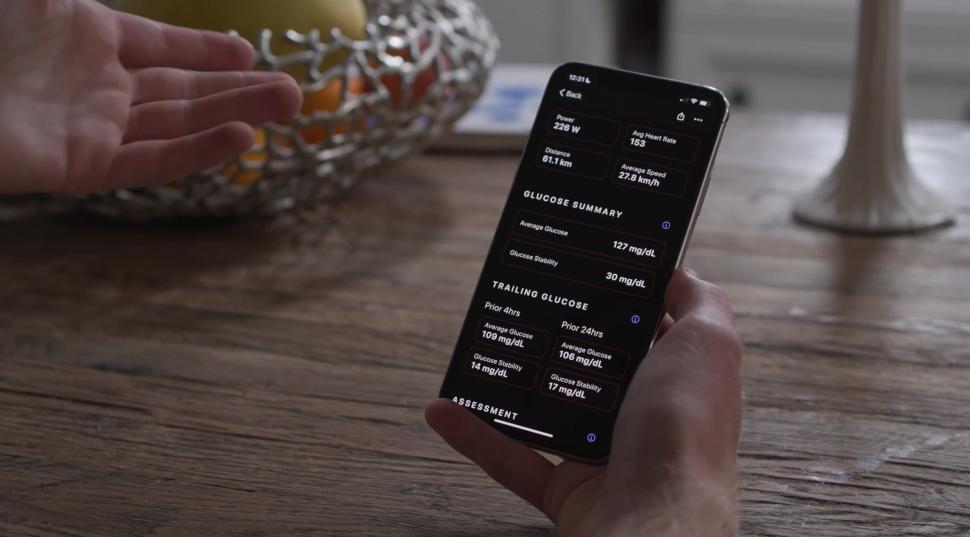
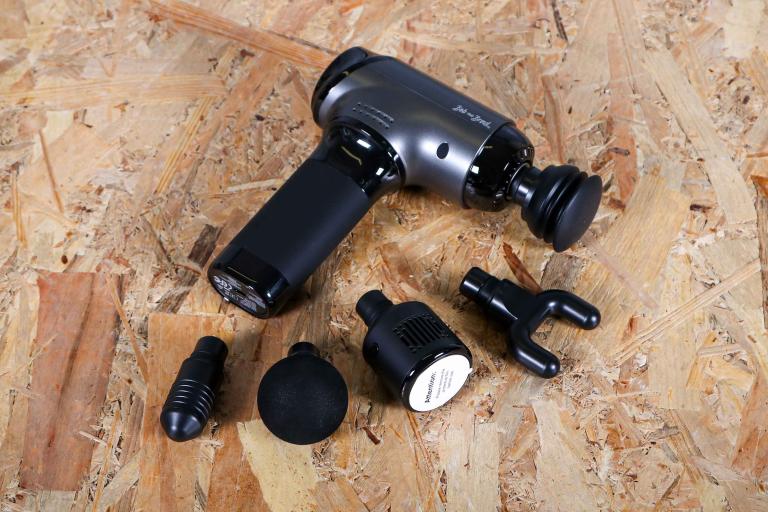
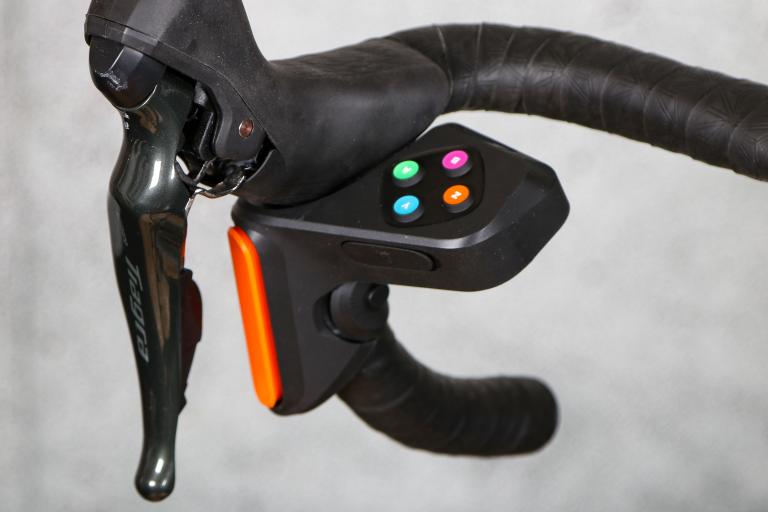


Add new comment
8 comments
So basically it's a standard glucose monitor and the only innovation is an app with all the collected medical and nutritional wisdom is one place.
Bit of a con really isn't it?
Who'd have thought?
It's expensive, yes. But as a Diabetic please don't tell me or anyone that normal blood testing devices (prick your finger, get blood onto a test strip, etc etc etc) is easy or remotely convienient on a bike or anywhere in fact in comparison to this or the normal, not as good as this non sport version. It's the only peice of diabetes tech that has changed in probably 40 years and it's been utterly revolutionary!
I'm in several minds about this. As a type-1 diabetic, I've got something very similar plugged into my arm constantly. I'm basically reliant on it, as all sorts of variables affect how I respond to glucose and its readings largely drive my decisions about food and insulin intake.
Part of me thinks "great, this is useful information for endurance athletes plus it normalises my constant glucose checking." But then, I wonder how much use it actually is for anyone "normal". I have to use one, because my pancreas doesn't work and I can develop life-threatening consequences in the short or long terms if I don't monitor my glucose. Non-diabetics have working pancreases, which do that monitoring for them. As the review hints, the output isn't actually that useful: if you've overdone it, you've overdone it. You'll need to stop and eat something, and in 10-15 minutes you'll feel a bit better. By the time the monitor alerts you, it's too late.
The idea that you keep monitoring before you get to a problem level also doesn't quite work, I think. For one, I believe that these monitors are made to lower accuracy than my medical-grade ones. More fundamentally, the confounding factors are multifarious and some may as well be random. Temperature, stress, sleep, previous days' exercise are all things that can affect how x amount of carbs are processed by the body: as a pro athlete with a data science team behind you you might be able to control for these and get meaningful predictions. As a forty-something squinting at a phone screen, I can't.
Perhaps even more fundamentally, I'm already enough of a MAMIL. I don't want to now look like the sort who'll drop £130 a month on the latest data fad while being overtaken by people half my age on bikes that cost less than half mine.
Looks like an Libre 3 glucose sensor linked to a wrist band. You can buy the sensors well at least the libre2 online, they last 14 days, link to your smart phone.
They do provide a valuable insight to how the body reacts to carbohydrates being consumed. Also general levels of glucose in the body from overnight fasting. Exercise was interesting results with low intensity not really spiking glucose but high intensity like weightlifting spiked my glucose, albeit very briefly.
I used it as part of an experiment to gain ketosis levels.
The body when functioning normally happily regulates glucose throughout the day without carbs.
Also light exercising(walking, gentle cycle) after a meal really helps flatten the peak on the glucose spike.
This is all true, but my question for the non-diabetic non-elite potential customer is "so what?"
The functioning body regulates glucose with or without carbs, and this seems a lot of money to spend on something which doesn't seem to give any real actionable insights. "Flattening the curve" isn't an achievement in itself, it's a proxy for athletic performance: at my levels of prowess, I see no difference in my times unless I'm at extreme highs or lows: then I feel physically and mentally dreadful and I don't need the sensor to tell me that.
I'm just not seeing what advantage this gives to its target audience that couldn't be replicated with an alarm reminding you to eat every hour or so on the bike.
The other problem, as I'm sure you know, is that the Libre is about 10 to 15 minutes behind actual blood glucose levels as it measures interstial fluid. So the idea of an early warning system is a bit flawed, although obviously it can say if you're trending lower.
As the article says, I think it would be useful for insights for a few weeks. I'm not T1 but my wife is. She knows exactly what spikes her sugars (including some less obvious ones, like most soups) whereas I can only make educated guesses for myself. Although as you say, there are many confounding factors (even more for women, with hormonal cycles) which means that extrapolating a few weeks of data may not be as helpful as it may at first appear.
I agree with all that you have said. I am Type 1 too and use these devices too. I have wondered if sapiens grabs other data and uses this to feedback useful information, but I doubt it tbh.